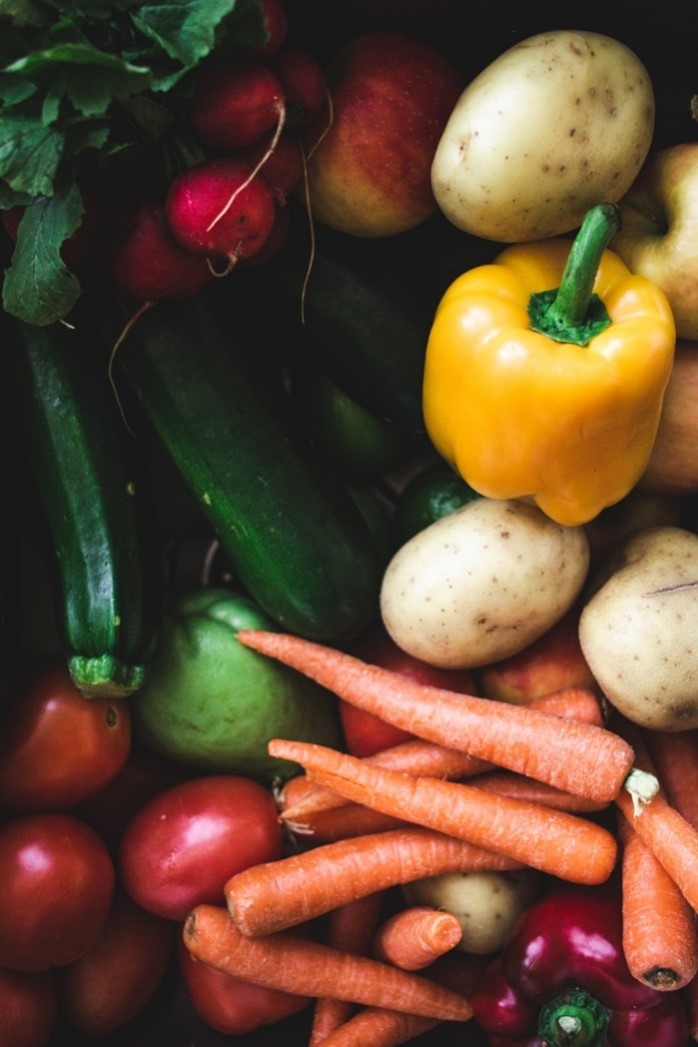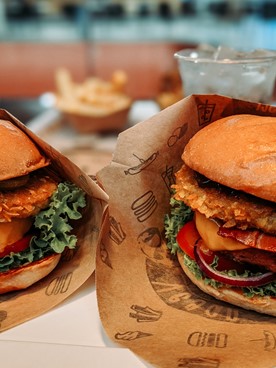-400x300.webp)
The online food delivery sector was blooming in 2019 with a global market size of $107.44 billion. The economic slowdown due to the COVID-19 pandemic slowed the growth in 2020, but the sector appears to be back on track and is expected to reach $154.34 billion by 2023, growing at an impressive CAGR of 11.51%.
While there’s no denying that starting your online food business right now is a lucrative opportunity, there are hard lessons to be learned in every new business. Each industry presents its unique legal considerations and complications.
When we’re talking about the food industry, that’s a whole another league, given the dense forest of information (as well as misinformation). Moreover, there’s a higher risk of legal consequences, and the volatility of the supply chain is another factor that can be affected by a multitude of factors.
Why Does the Food Industry Have Barriers to Entry?
Let’s say that instead of starting an online food business, your passion is to sell handmade jewelry. In that case, the barrier to entry is pretty low because your product won’t make anyone sick.
However, in the food industry, safety is always a huge concern. National and state government organizations are closely regulating and monitoring the food industry to ensure public safety. However, the onus is always on the producers and the merchants to stick to rules and be obsessive about quality.
If all of that isn’t daunting enough, running a food business also requires you to balance the inventory to avoid spoilage and waste delicately. Inventory system for restaurants is a popular idea already but online food businesses may not pay enough attention to it.
However, losses due to inventory mismanagement can prove very costly, and even fatal, for new businesses. All this discussion isn’t to discourage you from starting your own online food business but rather to warn you of the perils.
However, just as there are risks in the food business, the potential upsides are numerous as well. In fact, for entrepreneurs who are passionate and informed about their business idea, thy sky’s the limit. Moreover, the pandemic has further led to an increase in food entrepreneurs, which can only be a good thing.
Food Entrepreneurs Need a Step-by-Step Guide for Starting an Online Business
Well, starting a business, any business, needs a step-by-step guide. However, the need to have such a plan is even more important if you’re starting an online business. Why? Because there’s simply too much to cover! From production to shipping and, ultimately, how to sell your food products online.
It’s also important to note that every state differs in terms of food laws and licensing requirements. Moreover, some industries such as alcohol and dairy have their own set of additional rules.
It’s important only to take this information as a general guide and ensure you get the specific information from relevant authorities specific to your business and state. With all that out of the way, let’s dive in and take a look at the step-by-step guide to starting an online food business!
1. Finding Your Niche
There’s no shortage of food entrepreneurs shaking up the industry, but finding your niche is important. In most cases, food business ideas are born out of hobbies or passions.
People who love to bake will be more inclined to selling baked products online. Some want to share recipes passed down to them from their parents and grandparents with the world. Making your passion or hobby into a food business is a great place to start because you already have some, if not much, experience testing and honing the recipes.
2. Market Research
However, it’s not enough to just have an idea. You also need to conduct market research to assess its viability. Is there even a market for the product you’re trying to sell? If it’s a saturated market, how can you make your product stand out? Is there an untapped sub-audience or niche that you can focus on?
Answering these questions will help you refine your idea into a potentially profitable one. You’ll also have to consider if your product is easy to sell and ship online. Are there any legalities you need to consider? Fragility issues or shelf-life problems? These are all important considerations before you can be ready to take your product to the market.
3. Food Trends
Of course, it’s not a given that you already have a food business idea. In that case, you can look into food trends. Some of the most popular food trends in 2021 are mental health cooking, “flexitarian” diets, carb alternatives, elevated desserts, fusion cuisine, and much more.
Make sure your decisions are backed by research. You can start by looking at search volume and Google Trends and checking out the competition.
Keep in mind that not all competition is bad. The right type of competition will bring awareness to the product you’re trying to sell and help improve the entire category. Technology is reshaping the food industry, and healthy online competition is one of those ways.
4. Produced vs. Curated
Most of this post is for businesses that produce their own food, whether through a third-party manufacturer, a home-based kitchen, or a full-scale commercial facility. However, you can also consider curating existing food products, such as an online gourmet marketplace.
5. Sourcing the Materials
When it comes to sourcing your ingredients, it’s important to do your homework. It’s important to begin by tracing the supply chain so that your packaging claims match with what’s inside and you can work with trustworthy companies.
You can check out the FDA food ingredient and packaging guide, including information about allergen and food additives. The Food Processing Magazine also offers an ingredient supplier guide for food businesses in the US.
If you’re planning on labeling your product as organic, you’ll need to ensure that your raw ingredient supplier also has the proper certification before making these claims on your packaging.
Developing a relationship with your supplier is crucial to improving trust and making them feel like they have a vested interest in your business. Learn more about the local partnerships that every food business should make.
Moreover, it’s also important to see your suppliers as your partners as they can sometimes make suggestions based on something new in the market.
 Sourcing the ingredients is an important step
Sourcing the ingredients is an important step
6. Food Production
It’s not unusual for new online food businesses to start in the home kitchen. However, the need to continually upgrade the production setup will arise sooner rather than later. Selling your food online means you have several production options. Let’s take a brief look at some of them.
Selling from Home
While there are some food items that you can legally produce and sell straight from your home kitchen, be sure to look into the FDA regulation for your chosen products. In the US, FDA requires even home-based businesses to be registered as a facility.
Keep in mind that producing and selling from home doesn’t mean that you don’t need the proper license to sell food products from your home.
Co-op commercial kitchens
You can also opt for shared kitchen space that can be rented hourly or monthly, depending on your production needs. The benefit of choosing a co-op commercial kitchen space is that your costs and paperwork will be reduced as the facility will already be a registered commercial space.
You can check out Culinary Incubator for region-specific directories of shared kitchen spaces.
 Shared or co-op kitchen is a great way to get started
Shared or co-op kitchen is a great way to get started
7. Setting up your facility
This option allows you to have full autonomy as you start from scratch. However, be sure to check with your local food governing agency to ensure that your facility has been registered properly and meets the proper code.
However, it’s worth mentioning that this might not be the best idea for new entrepreneurs, but rather a future goal. Starting small and growing your kitchen facility as your business grows is the way to go.
A professional tip is to not move into a bigger facility unless you know you have enough business to support the move.
8. Packaging, Branding, and Labeling
Ecommerce is an entirely different challenge when it comes to food. The sense of taste, which is crucial to the decision-making process, can’t be accessed. Therefore, branding is even more crucial in online food products.
It’s important to tell a story and help your customers imagine how your product will taste. Your branding, labeling, and packaging should be on-brand with the product you’re trying to sell.
 Food packaging
Food packaging
9. Shipping and Delivery
Your online food business will also need a streamlined shipping process, as it’s one of the most common issues for business owners. Shipping food has its challenges and can very easily lead to a poor customer experience, regardless of how good your actual product is.
 Food delivery guy
Food delivery guy
10. Online Ordering Platform
Since you’re planning on selling online, it’s important to have an efficient online ordering system. MenuCRM offers a website platform that powers digital ordering and automation for online delivery. The system is an affordable entry point without any payment processing fees.
MenuCRM makes customer ordering smooth and simple; offering added features such as loyalty rewards, custom pricing, and a Menu that can be managed and edited simply.
More than 800 restaurants and businesses are already using MenuCRM, so book a quick demo now to see how it can benefit your online food business. Get in touch today for more information.